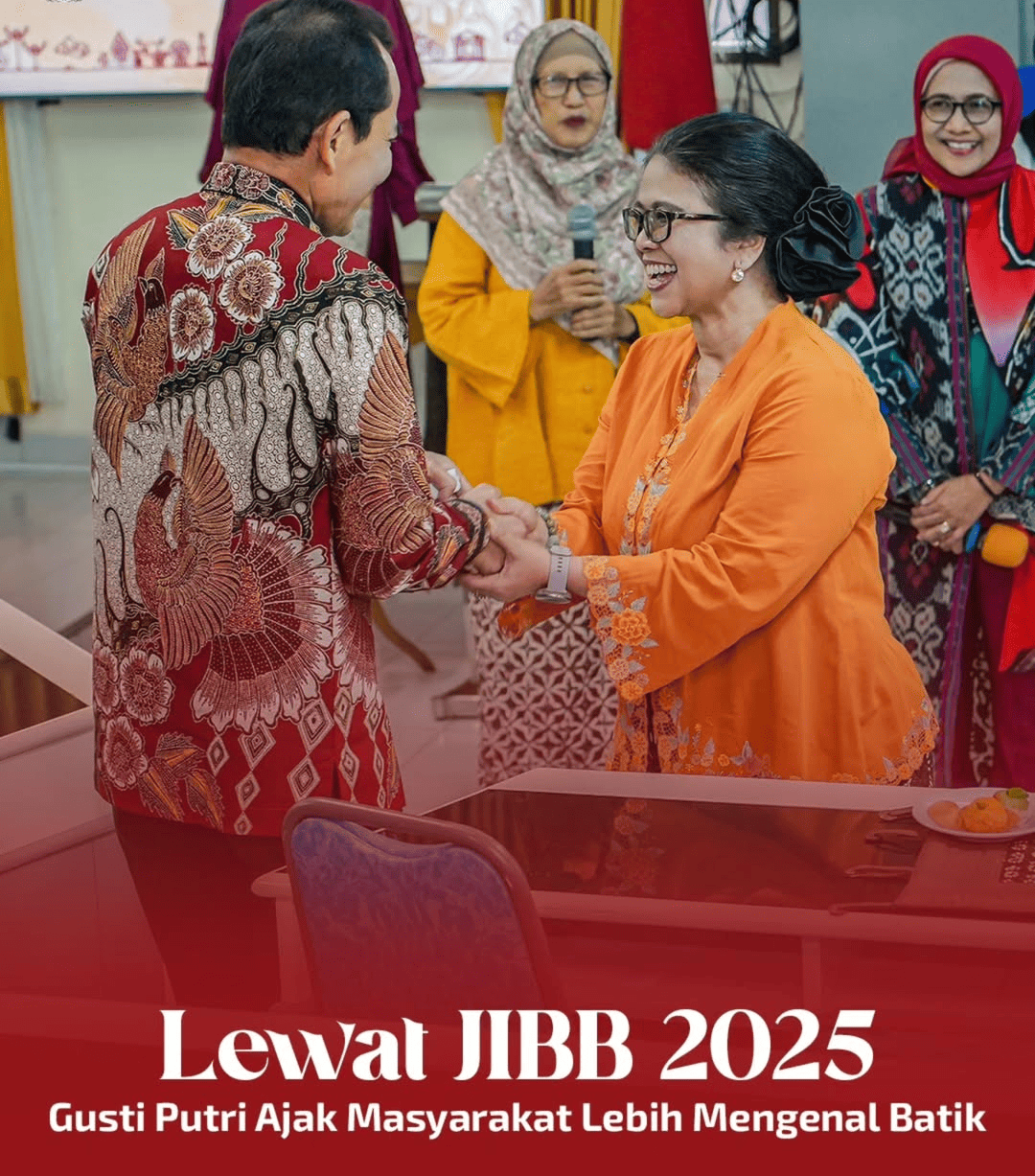Press Release: "Jogja International Batik Biennale (JIBB) 2025 Goes to Campus: Gusti Putri Emphasizes the Importance of Understanding the Historical Value of Batik"
Yogyakarta, which has been designated as the World Batik City since October 2014 under the slogan “Jogja Kota Batik Dunia” (Jogja, World Batik City), continues to strengthen its commitment to preserving batik. Beyond its aesthetic value, batik also holds significant historical, global, environmental, and economic importance.
This message was conveyed by the Daily Chairperson of the National Crafts Council (Dekranas) of the Special Region of Yogyakarta, GKBRAA Paku Alam, when serving as a speaker at the Jogja International Batik Biennale (JIBB) 2025 Goes to Campus event on Friday (September 26). The event took place at the Seminar Room of the Faculty of Economics and Business, Accounting Building, UPN “Veteran” Yogyakarta.

Candid Documentation with Gusti Putri
In her presentation, Gusti Putri emphasized the importance for the people of Yogyakarta to understand the historical value and originality of Jogja Batik. She expressed regret if batik is viewed merely as clothing without recognizing its philosophical meaning.
“It is unfortunate if one only wears batik without knowing its historical value and originality. As people of Jogja, we must truly understand batik, because ultimately, we must cherish it,” she stated.
Gusti Putri also shared her experience as a batik artisan since 2011. Much of her inspiration comes from centuries-old manuscripts preserved at Pura Pakualaman. On this occasion, she also introduced the distinctive Asthabrata batik of Pura Pakualaman and explained the philosophy it embodies.
According to her, classical batik patterns such as kawung and parang have existed since ancient times and carry profound philosophical messages.
“Even if we do not make batik ourselves, we must still recognize that the philosophies within it are truly extraordinary,” she firmly concluded.


